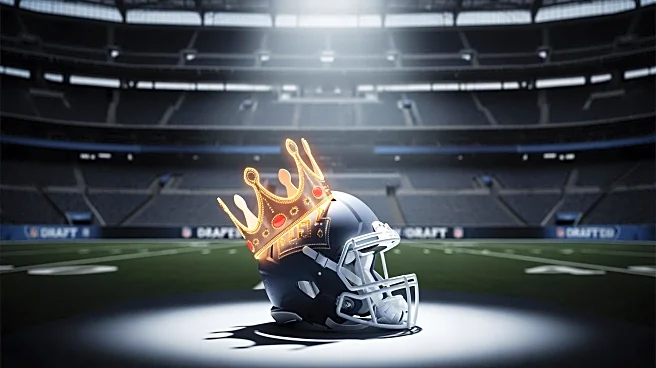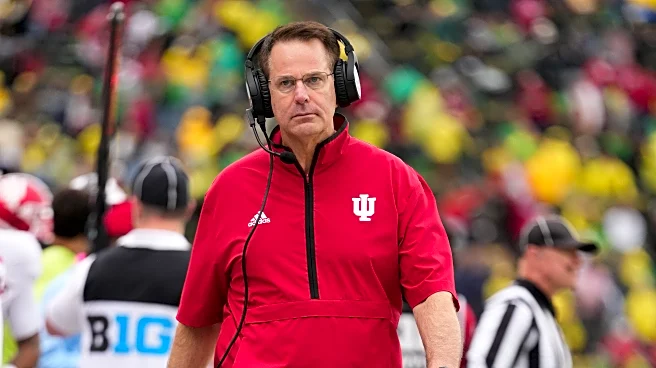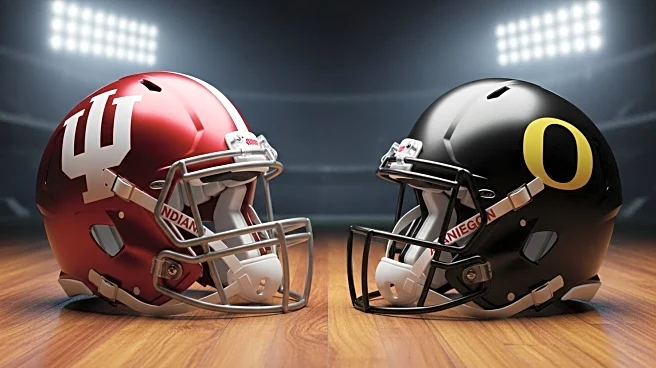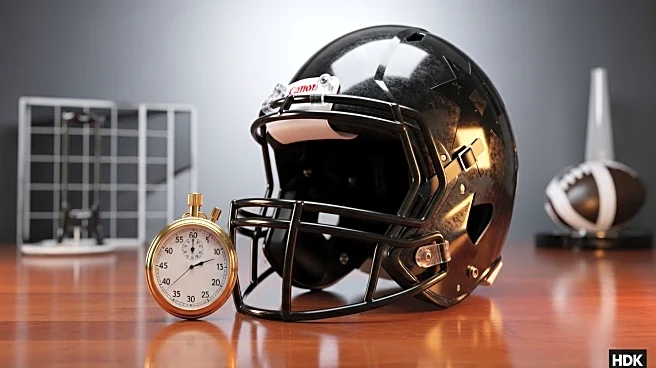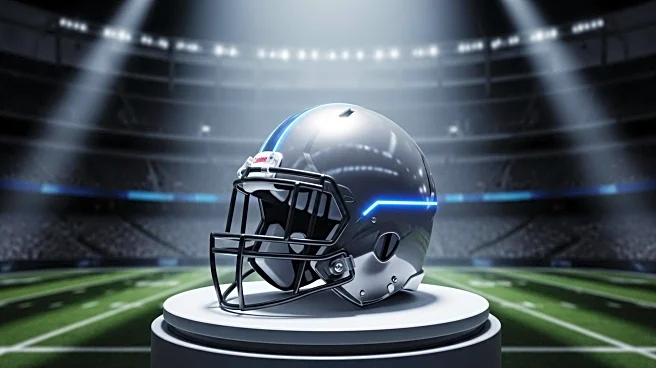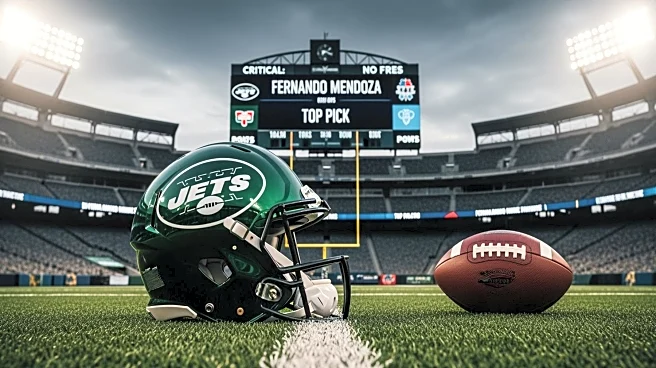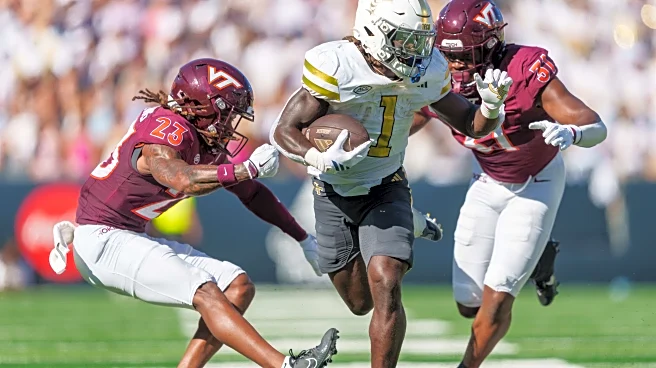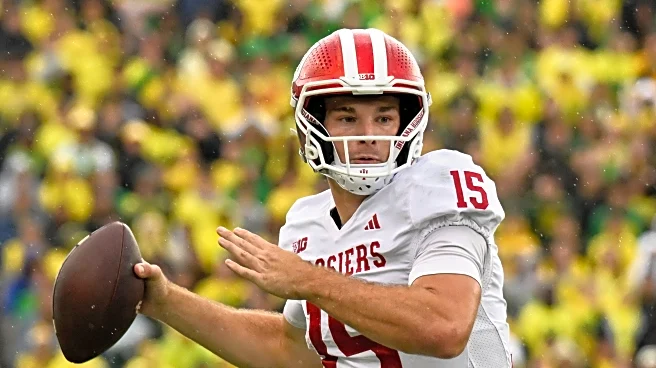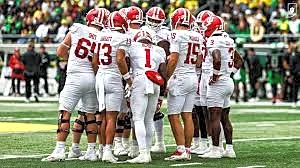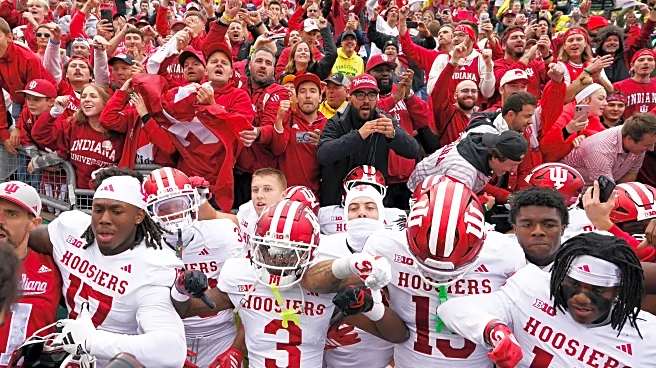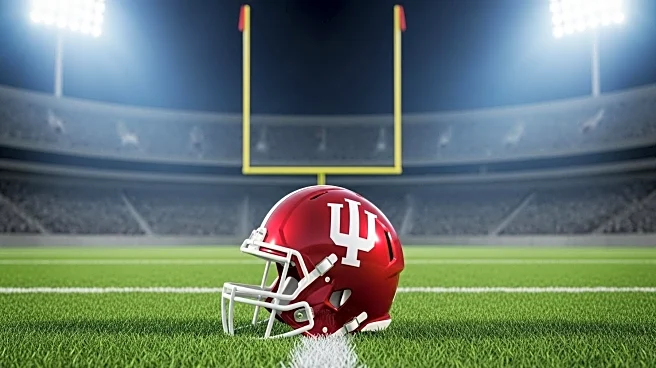What's Happening?
Mel Kiper Jr., a prominent ESPN analyst, has released his 2026 NFL Draft Big Board, placing Oregon quarterback Dante Moore at the top. Moore has impressed with 1,396 passing yards, 15 touchdowns, and a 72 percent completion rate in his first year as a starter.
Notre Dame running back Jeremiyah Love follows Moore, having accumulated 690 yards from scrimmage and 11 touchdowns. Indiana's Fernando Mendoza ranks third, noted for his accuracy and quick release. The list reflects a competitive landscape for quarterbacks, with Moore and Mendoza leading the pack, while other notable quarterbacks like Arch Manning have seen their stock decline.
Why It's Important?
The rankings by Mel Kiper Jr. are influential in shaping perceptions of college players' potential in the NFL, impacting their draft stock and future careers. Dante Moore's top position highlights his potential as a leading quarterback prospect, which could affect team strategies in the upcoming draft. The inclusion of players like Jeremiyah Love and Fernando Mendoza showcases the depth of talent available, influencing scouting and recruitment efforts. These rankings can also affect college football dynamics, as players' performances are closely monitored by NFL teams and scouts.
What's Next?
As the college football season progresses, players will continue to vie for top positions on draft boards, with performances in upcoming games potentially altering their rankings. NFL teams will begin to strategize their draft picks based on these evaluations, considering team needs and player potential. The draft process will intensify as scouts and analysts further assess players' capabilities, leading to potential shifts in rankings. Players like Moore, Love, and Mendoza will aim to maintain or improve their standings through consistent performances.
Beyond the Headlines
The rankings not only impact individual players but also reflect broader trends in college football, such as the emphasis on quarterback performance and versatility in running backs. The analysis by Kiper highlights the evolving criteria for NFL readiness, including accuracy, mobility, and adaptability. These factors could influence training and development programs in college teams, aiming to align with professional expectations.
